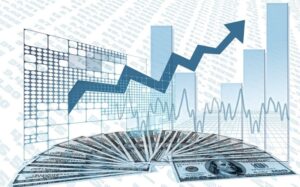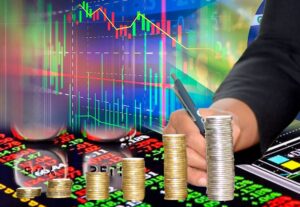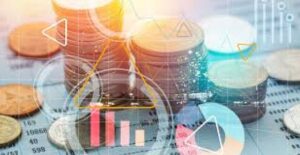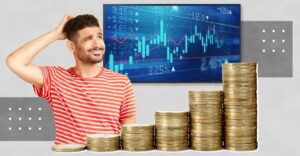Who is part of the capital market?

Who is part of the capital market?
In general, the institutions that are part of the capital market are companies, stock exchanges, brokers, banks and the Securities and Exchange Commission (CVM), as we will see below.
Do you know what the capital market is?
 Have you heard of capital markets? Do you know their characteristics and how they work? Next, we tell you what you need to know about this type of financial market.
Have you heard of capital markets? Do you know their characteristics and how they work? Next, we tell you what you need to know about this type of financial market.
The capital market, also known as the stock market, is one in which funds or means of financing are marketed, aimed at people or companies that require capital to continue their operations. These funds are characterized by having a medium and long term maturity. The capital market has different levels of risk and diversity in the liquidity of the financial instruments it offers, making it easy to buy and sell securities that serve as a money transfer instrument.
Companies seeking financing offer their shares through the Mexican Stock Exchange (BMV), which is governed by the National Banking and Securities Commission (CNBV), and investors go to it to purchase or sell shares. the same.
Among the financing instruments offered by the capital market are the following:
- Actions. They are the main instrument sold in the capital market. Shares are credit securities that represent a proportional part of the capital of a company. By purchasing shares you acquire a part of the company, corresponding to the value represented by each share. The return on shares, which is a measure of profitability over a period of time, depends on the capital gains that the company has and can also put the investment at risk.
- Obligations convertible into shares. Obligation titles are granted by a stock exchange company to the holder or investor to record their participation in the granting of a collective credit and give them the right to demand that the issuer pay the value of the obligations within a period between 3 and 10 years. . At the end of the term of the obligation, it becomes an action.
- Development Capital Certificates. These financial instruments are focused on companies belonging to growing sectors. They are characterized by having a specific maturity period and their performance is uncertain in the long term.
- Stock certificates. They are credit titles that a company issues to obtain financing. These certificates have a nominal value and a maturity period, their yield depends on the interest rate that is established. One of its characteristics is that it offers greater legal security to the owner or investor, because it can include obligations to make or not, advance payments of capital and maturity.
The capital market allows companies to efficiently obtain resources for financing, offers high long-term profitability, as well as various products with different risks.
What is the capital market?
The capital market in which medium and long-term assets are traded. The supply comes from private savings and is channeled towards financing fixed capital investments that private companies can make. It is divided into stock market and credit market. It is, in other words, what we understand when we talk about the market itself, since the capital market encompasses all of them.
A characteristic of the capital market is that it is where market agents go to finance themselves in the medium and long term, in the fixed income or variable income markets and to make investments by buying shares or bonds, in addition to other financial products. It is important to know how to differentiate the capital market from the money market. The first has more risk, since more market agents with different credit ratings access it. The other important aspect that can be differentiated is that the money market is more liquid than the capital market, since in this second there are assets that are very liquid and others that are almost not.
What is the capital market made up of?
 The capital market is made up of many different asset classes, as it encompasses both fixed income, equities and derivatives. Therefore, we have to know what is meant by each of these markets to better understand what the capital market is made up of.
The capital market is made up of many different asset classes, as it encompasses both fixed income, equities and derivatives. Therefore, we have to know what is meant by each of these markets to better understand what the capital market is made up of.
Fixed income market : bonds, Treasury bills and other types of products typical of the credit market are traded here. It is better understood if we think of it as a debt market, since what we do when we buy a bond is finance the issuer of that bond, which can be a company or a State. It is also characterized by setting an interest rate to be paid. Thus, the investor knows the estimated profitability that he can obtain with the investment. It is one of the markets with the least risk, but it will depend a lot on the issuer, since there are companies that have a high risk and will pay more interest to their creditors and other companies with less risk. On the other hand, there are also States that finance themselves in this market and that usually have less risk than private agents.
Equity market – This is the stock market, where there is greater access for retail investors. Here you go to buy shares of a company with the intention of holding them thinking that in the long term those shares will register a revaluation because the company’s business model is profitable and we trust in it. Thus, on the one hand, there are companies that issue their shares to obtain financing in this way, since they give up a percentage of ownership of the company, and investors who buy these shares trusting in the fundamentals of the business and its subsequent revaluation.
Derivatives market : this market is also broad and is characterized by investing in an underlying asset. For example, when we invest in the oil gold futures market, we are investing in the financial derivatives market. Here, the possibilities are many, you can invest in raw materials, in interbank markets such as the Euribor, you can also invest indirectly in fixed income and variable income using other types of financial instruments. But, generally, they tend to be futures markets and are used as hedging, speculation or arbitrage.
With all this, these are the three elements that make up the capital market. Thus, when we hear about that word we know that they are referring to the entire market that encompasses a wide variety of assets.
How does the Capital Market work?
 In the Capital Market there are issuers of securities that need financing and investors who have funds and seek to obtain returns. Issuers of securities can be companies or different levels of the State, while investors can be individuals or companies.
In the Capital Market there are issuers of securities that need financing and investors who have funds and seek to obtain returns. Issuers of securities can be companies or different levels of the State, while investors can be individuals or companies.
Securities issuers are entities that seek to finance their projects by issuing marketable securities. These assets can be: bonds , stocks , sureties , guaranteed checks, financial trusts and many more.
The capital market is a formal market regulated by the CNV, in order to guarantee the security of the operations carried out in it.
What is the CNV?
The National Securities Commission is the regulatory body of the Capital Market in Argentina. The CNV operates under the orbit of the Ministry of Economy of the Nation and is in charge of applying and controlling compliance with the Capital Markets Law.
The CNV was created in 1968 by the Public Offer Law (Law 17,811) and is currently governed by the regulatory framework conferred by the Capital Market Law (26,831) and the modifications introduced by the Productive Financing Law (27,440).
Its objective is to supervise, promote and develop this market. Helps ensure that operations are transparent and secure by monitoring and controlling all participants. Additionally, other of its objectives are:
- Update and perfect capital market regulatory frameworks collaboratively.
- Strengthen evaluation and monitoring mechanisms, early warnings and mitigation with a focus on risk prevention.
- Stimulate the active participation of the capital market in the financing of productive sectors of the economy on a federal basis.
- Accompany the challenges imposed by technological advances with the modernization of systems and procedures.

Who can participate in the capital market?
Individual investors can participate in the capital market by investing money in shares, debentures, futures contracts, options, derivatives, among other financial assets.
How to invest in the capital market?
The capital market is an opportunity to buy and sell various financial assets, from shares to public or private fixed income securities. Accessing it ensures that your financial investment portfolio becomes more diversified, but choose reliable banks or brokers and solid bond issuers.
What are the main requirements that the company needs to have to be able to participate in the capital market?
One of the requirements for a company to register with the CVM is that it operates as a limited liability company. Another important point is corporate governance and transparency in accountability, without which it is impossible to operate in a competitive and voracious market such as capital .
What is the difference between credit market and capital market?
Difference between Capital Market and Credit Market In the credit market , financial institutions make transactions with savers and borrowers independently. … In the capital market , financial institutions participate as service providers between the saver and the borrower.
What is the capital market?
The capital market is a system that provides the distribution of securities so that companies can enable their capitalization through the liquidation of the securities issued by them.
What are the types of financial institutions in the credit and capital markets?
The capital market is made up of financial institutions , stock brokers and the Stock Exchange itself…. In it, the following are traded :
- Actions;
- Debentures;
- Private securities;
- Futures market ;
- Fixed Income.
What is the bond market?
It is a fixed income investment, that is, the return on the invested capital will be known at the time of acquiring the security . However, there is an important distinction between titles , as there are pre-fixed and post-fixed titles.
How does the public securities market work?
Public bonds are papers issued by the National Treasury with the aim of financing government activities. … In other words, it is lending money to the Federal Government. In exchange, you receive the promise of having the money returned with increased interest on the date agreed upon when purchasing the paper.
What does bond value mean?
The value of the bond on your statement already takes these interest rate variations into account. The security is updated according to the price it is trading on the market at that moment. This is what we call mark-to-market. If there is a drop in prices traded on the market, your balance will fall.
How are public bonds priced?
The pricing of post-fixed public and private securities is very intuitive and simple to understand. The initial price will be updated daily by the paper’s index – the daily variation of the Selic or DI – until the expiration date.
How to calculate the PU of a security?
The percentage difference between the face value and the purchase price of a bond is its total yield. To calculate it, all you need is simple financial mathematics. The total income formula is as follows: Total income = (Face Value)/(Purchase Value) – 1.
What is the secondary market for public securities?
In a secondary market , trading takes place between investors. This is what happens in the secondary public securities market . It is not possible to access it through Tesouro Direto or through the home broker. The investor can trade in it through the trading desk of their stockbroker.
How to calculate the price of an Ntn-b?
They are generally paid semi-annually. Its value is calculated as the percentage of each title (e.g. NTN – B has 6.00% per year, or 2.96% per semester) times the VNA calculated for that date. Coupon payment dates are retroactive to expiration.
How to calculate the value of the direct treasury?
The profitability at Tesouro Direto is annual. To estimate your monthly return, simply divide the annual rate by 12. However, the result may vary, especially in securities linked to the IPCA and pre-fixed ones.
How to calculate the price of an Ntn-f?
In other words, face value is the redemption value of the bond. In this way, the yield on an NTN – F will be given by the difference between the purchase price and the sum of the amounts received as coupons plus R$1.
How much does the IPCA 2035 Treasury yield?
Check the profitability of each title
| Annual profitability: | Minimum investment: | Maturity: |
|---|---|---|
| IPCA + 4.09% | R$ 40.14 | 05/15/ 2035 |
| IPCA + 4.09% | BRL 40.37 | /td> |
| IPCA + 3.94% | R$ 41.10 | /td> |
| IPCA + 4.18% | BRL 43.89 | /td> |
How does the IPCA 2035 Treasury work?
The IPCA Treasury is a public bond issued by the Government. Its objective is to raise money from investors for the Government to invest in areas such as infrastructure, health and security. By investing in this asset, you will be lending money to the government. In return, he pays an interest rate that is hybrid.
How much does the IPCA Treasury yield?
Treasury IPCA /IGP-M In this security, the income is taxed by the Broad Consumer Price Index ( IPCA ) or by the General Market Price Index (IGP-M) plus a rate defined by the government. It is an asset with good annual profitability, considering that it can yield something between 11% and 12%.
How to calculate Treasury IPCA 2035?
IPCA 2035 Treasury bond maturity date = 05/15/2035 ; Interest rate offered by the Treasury on the day the bond is purchased = 7.20%;
What can I invest with 1,000 reais?
Where to invest 1000 reais : see 4 options
- Treasury Direct. Tesouro Direto is a federal government platform to offer public bonds to people. …
- CDB, LCI and LCA (private credit securities)…
- Investment fund . …
- Investment robot . …
- 5 practical tips for those who want to start investing in the stock market.
How much does 1,000 reais make in CDB?
As you may have already read on Rico’s Blog, savings accounts are one of the lowest profitability applications on the market. In the simulation already carried out, we showed how a CDB of 1096 days yields 123.5% of the CDI, that is, 6.83% per year. With R$1,000, the return could be R$219.91.
How does the IPCA+ Treasury work?
How the IPCA Treasury works IPCA Treasury with Semiannual Interest (NTN-B): it is a title suitable for those who want to receive remuneration regularly. He pays half-yearly interest in advance of the maturity value. IPCA+ Treasury (NTN-B Principal): pays the amount only on the due date.
Is it possible to lose money in the IPCA Treasury?
If you don’t sell, you will only be worth a little less than what you had purchased. And most importantly: if you stay with the bond until maturity – regardless of whether it is the Selic Treasury , Prefixed Treasury or IPCA Treasury – you will not lose money .
How much does the IPCA yield today?
The Treasury IPCA +2026, for example, is today offering the profitability of the IPCA (Broad National Consumer Price Index) plus 2.64% per year. Prefixed securities can be found with profitability between 5.03% and 7.49% per year. While Savings interest may not exceed 5% in 2021.
How to calculate IPCA interest?
For example, if an IPCA Treasury bond maturing in 2024 pays a rate of 5.43% per year, the approximate gross yield on this investment will be the sum of 3.93% and 5.43%, that is, 9.36% per year. To convert this number to a percentage of the CDI and compare with other investment options, divide 9.36 by 6.39.

